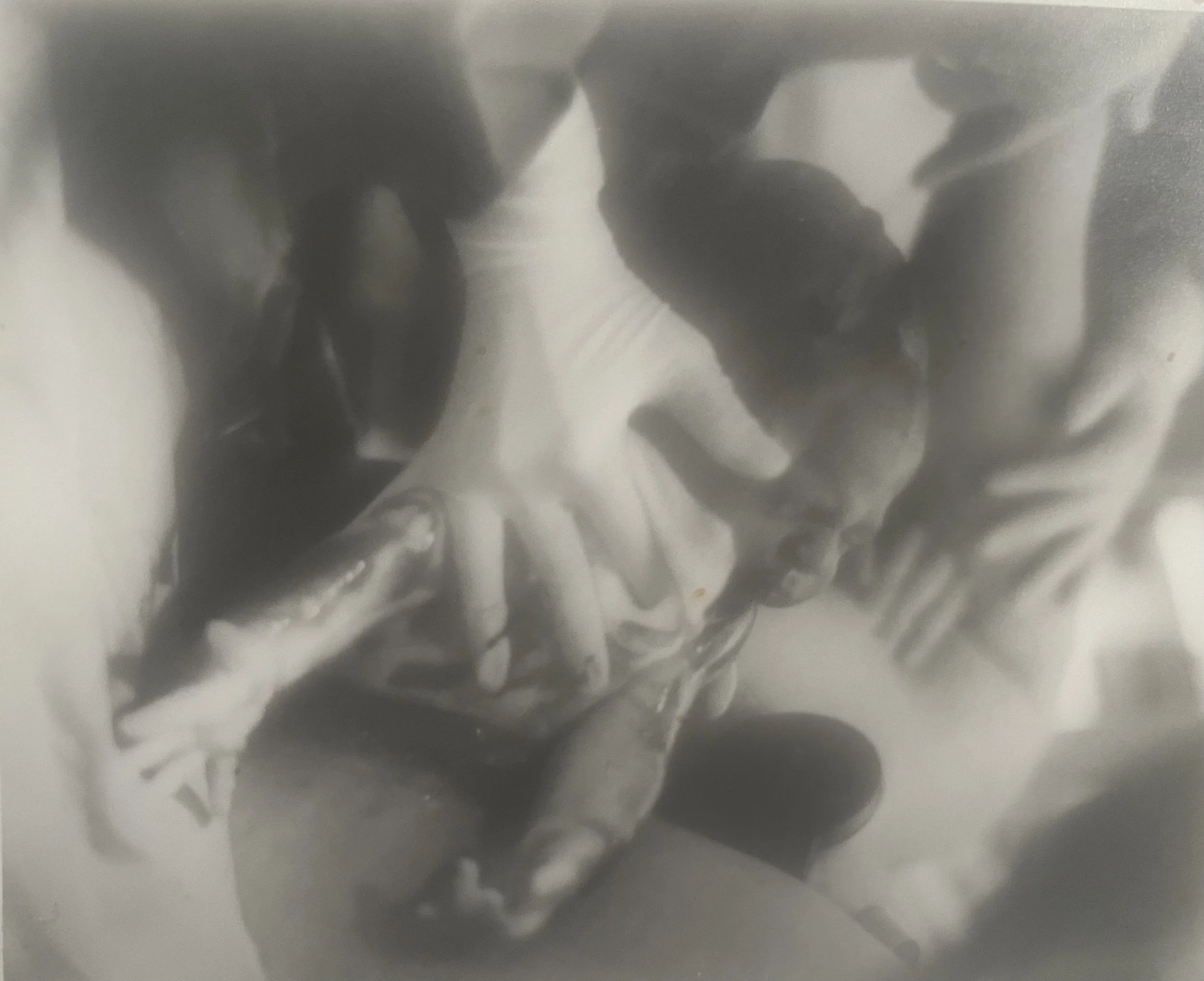Reparation: A practice to birth revolution
The moment Lucy’s son, Simon, was born. Image by Barbara Hirshkowitz
by Lucy Duncan
Ant, with the rest of the Abolition School team, attended the Socialism Conference in Chicago earlier in July. One of the things that impressed him the most was a presentation by Paula X. Rojas about how we need to stop using military based language for revolution. Paula is an organizer, a doula and co-founder of Mamas of Color Rising. She proposed shifting to birthing as the language we use for revolution.
This resonated with me deeply. We strive to be midwives of transformation, tenders of spiritual worldmaking. Yes, there is so much to end, to abolish, and what better way to do that than to create what will make the oppressive world subside, retreat. When I was getting ready for my son, Simon’s, birth I nourished my body well, ate a lot of protein, learned to breathe, prepared a room for him and took care that the house we lived in was ready for this new life. At the time we lived in a burial ground, 17 acres of a Quaker cemetery, which felt like a perfect place to raise a child, to nurture him in a space with trees grown in the soil of the past. It feels now as though we are composting the harmful past, striving to create a new world in what I hope will be the rubble of empire. In those months before Simon’s birth, I learned how to breathe and do exercises that would help me to endure the pain of birth. We gathered community, who offered gifts but also their tangible support for his new life.
In the third trimester I couldn’t sleep, my body was not entirely mine, it was a sanctuary for this new life. Then the labor came. The slow contractions and the waiting between them, the lead up to active birth. My mom was present at Simon’s birth. She had my brothers and me as Lamaze babies and claimed that our births had been painless. I was moved into a birthing room when I was dilated 5 centimeters and the contractions became more intense. My doula rubbed my back with a rolling pin filled with ice water. At one point I had a particularly intense contraction and was focused on breathing through it. I don’t think anyone thought I could talk and I lifted up my head afterwards and said, “Painless childbirth, mom, you’re full of shit!”
Then my contractions got closer to one another and I started to use the code word we had created for pain meds. That moment was so painful, so intense. My doula said, “Let’s see where the midwife says you are in the process.” I was in transition, the moment before you can start to push, a moment I was not sure I could endure. But the midwife said I could start pushing soon and that it wouldn’t hurt so much. So I was able to make it through. With all the support around me, I pushed and after some time Simon was born. My friend Barbara took a picture of that moment. There are all kinds of hands in the picture, the midwife catching him, the doula and my ex-husband’s hands on me, and Simon with jazz hands as he entered this world.
What if we understood as Valerie Kaur says that we are in the midst of the darkness of the womb, not the darkness of the tomb. Or maybe we are in the midst of both. And, jeez, it’s so hard to feel the sense of being within a womb with genocide in Gaza and people being pulled off the street by ICE, with the increase in repression at so many levels.
And I believe it’s up to us to make this time a threshold for the world that is not yet, that is striving to be born. I believe reparations is a powerful practice in moving toward the liberation of revolution. May our efforts to envision and heal and resource, though on many days they may feel so small, gather together into a revolutionary birth.


